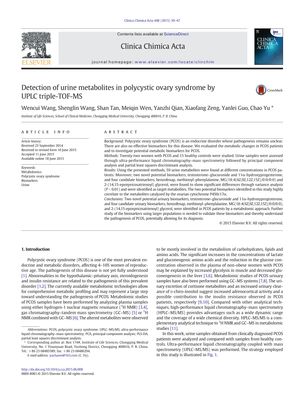TLDR Researchers found potential urine markers for polycystic ovary syndrome, including testosterone-glucuronide and 11α-hydroxyprogesterone, which may help diagnose the condition.
In a study from 2015, researchers analyzed urine samples from 22 women with polycystic ovary syndrome (PCOS) and 15 healthy controls to identify potential biomarkers for PCOS. They used ultra-performance liquid chromatography-mass spectrometry (UPLC-MS/MS) and found 59 metabolites with different concentrations in the PCOS group. Two novel potential biomarkers, testosterone-glucuronide and 11α-hydroxyprogesterone, and four candidate biomarkers—benzofenap, methionyl-phenylalanine, MG(18:4(6Z,9Z,12Z,15Z)/0:0/0:0), and 2-(14,15-epoxyeicosatrienoyl) glycerol—were identified with significant differences. These biomarkers are related to the ovarian cytochrome P450c17a enzyme. The study concluded that larger studies are needed to validate these findings, which could improve understanding and diagnosis of PCOS. The study also suggested that urinary testosterone glucuronide correlates with plasma testosterone, and decreased urinary 11α-hydroxyprogesterone may be linked to inflammation and male-pattern hair loss in PCOS patients.
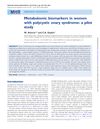 43 citations
,
July 2012 in “Molecular human reproduction”
43 citations
,
July 2012 in “Molecular human reproduction” Certain metabolites are lower in women with PCOS and could be potential markers for the condition.
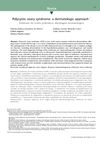 26 citations
,
February 2011 in “Anais Brasileiros De Dermatologia”
26 citations
,
February 2011 in “Anais Brasileiros De Dermatologia” Polycystic Ovary Syndrome can cause hair loss and skin issues, and early treatment is important for preventing complications.
 4809 citations
,
January 2004 in “Fertility and Sterility”
4809 citations
,
January 2004 in “Fertility and Sterility” The 2003 consensus updated PCOS diagnosis criteria and highlighted increased risks of diabetes and heart disease for those affected.
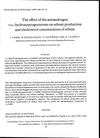 27 citations
,
July 1982 in “British Journal of Dermatology”
27 citations
,
July 1982 in “British Journal of Dermatology” The antiandrogen 11α-hydroxyprogesterone effectively reduces skin oil and cholesterol when applied to the skin.
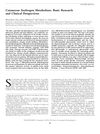 233 citations
,
November 2002 in “The journal of investigative dermatology/Journal of investigative dermatology”
233 citations
,
November 2002 in “The journal of investigative dermatology/Journal of investigative dermatology” Creating stronger blockers for skin enzymes might lead to better treatment for conditions like acne and excessive hair growth.
 1 citations
,
February 2017 in “Journal of gynecology and womens health”
1 citations
,
February 2017 in “Journal of gynecology and womens health” The document concluded that more research is needed to understand how estrogen affects the enzyme involved in hirsutism development.
 82 citations
,
May 2016 in “Best Practice & Research in Clinical Obstetrics & Gynaecology”
82 citations
,
May 2016 in “Best Practice & Research in Clinical Obstetrics & Gynaecology” The conclusion is that managing androgen excess requires long-term treatment, including hormonal contraceptives and androgen blockers, with follow-up after six months.
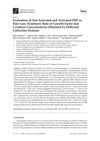 136 citations
,
February 2017 in “International Journal of Molecular Sciences”
136 citations
,
February 2017 in “International Journal of Molecular Sciences” PRP treatment improves hair growth, and the device used can affect results, with some being more effective.
 81 citations
,
March 2009 in “Seminars in Cutaneous Medicine and Surgery”
81 citations
,
March 2009 in “Seminars in Cutaneous Medicine and Surgery” Effective hair loss treatment in women requires correct diagnosis and can include medications like minoxidil, antiandrogens, and treatments for underlying conditions like PCOS.
